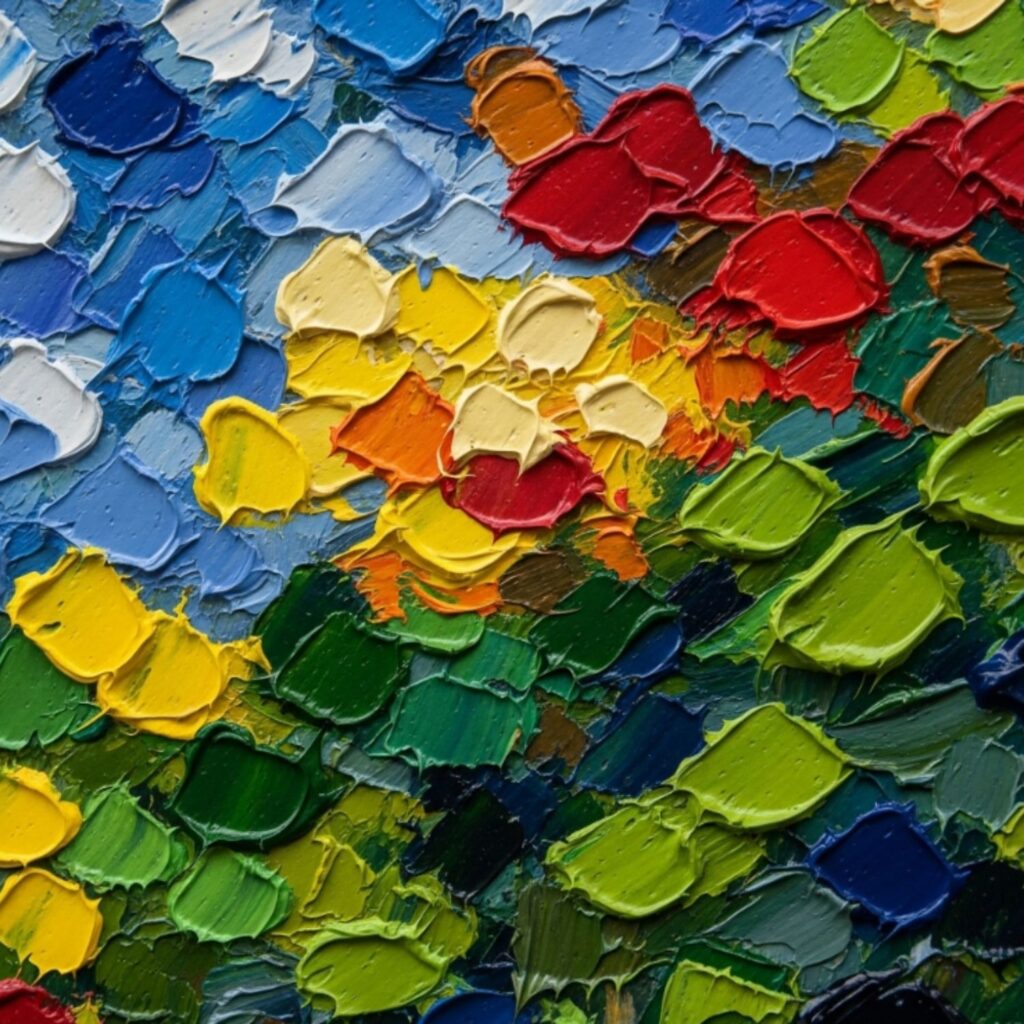
The foundation of the Impressionist technique was painting outdoors. Previously, artists would typically only sketch outside and complete their works in a dark studio. But figures like Monet believed that to capture the essence of a landscape, one had to be there, witnessing the light change minute by minute, second by second. The invention of pre-mixed paint in tubes made it easy for them to carry their easels everywhere, from the flower fields of Giverny to the bustling boulevards of Paris.
Painting directly in natural light completely changed their palette. They realized that the shadow of an object was not black or gray, but was composed of the reflected colors of its surroundings, often shades of blue, violet, or green. This is why Impressionist paintings rarely use the color black. They eliminated it to create a sense of air and light flooding the entire scene, making even the darkest areas feel vibrant.
The biggest secret behind the characteristic brilliance of Impressionist paintings lies in the technique of optical mixing. Instead of thoroughly mixing colors on a palette to create a uniform hue, Impressionist painters would place dabs of pure color next to each other on the canvas. For example, to paint a green lawn under the sun, instead of mixing green, they would apply small, adjacent strokes of pure blue and pure yellow.
When viewers stand at a reasonable distance, their eyes automatically “blend” these separate color spots, creating a shade of green that is far more brilliant and dynamic than a pre-mixed color would be. This technique produces a shimmering effect, a feeling of constant movement, as if the air and light are truly vibrating before the viewer’s eyes. This is precisely what makes the water in Monet’s paintings always feel so authentically rippled and sparkling.
To capture the fleeting impressions of light and weather, the Impressionists had to work very quickly. This led to the development of short, thick, and decisive brushstrokes. They made no attempt to hide the marks of the brush, as was the academic tradition. On the contrary, each stroke is clearly visible, becoming an essential part of the painting’s texture and energy.
These brushstrokes not only describe the form of an object but also convey the emotion and speed of the moment. Looking at the brushwork of Camille Pissarro as he depicted a crowded street, one can feel the hustle and bustle of the crowd. Similarly, in the paintings of Berthe Morisot, the light, feathery brushstrokes perfectly express the tenderness of intimate, everyday scenes.
In summary, Impressionist paintings are more than just beautiful landscapes. They are subtle records of light, the results of a scientific approach to color, and the imprints of fleeting moments. By understanding these techniques, we are not just looking at a painting; we are “reading” the passionate dialogue between the artist and the natural world—a secret told through every living brushstroke.